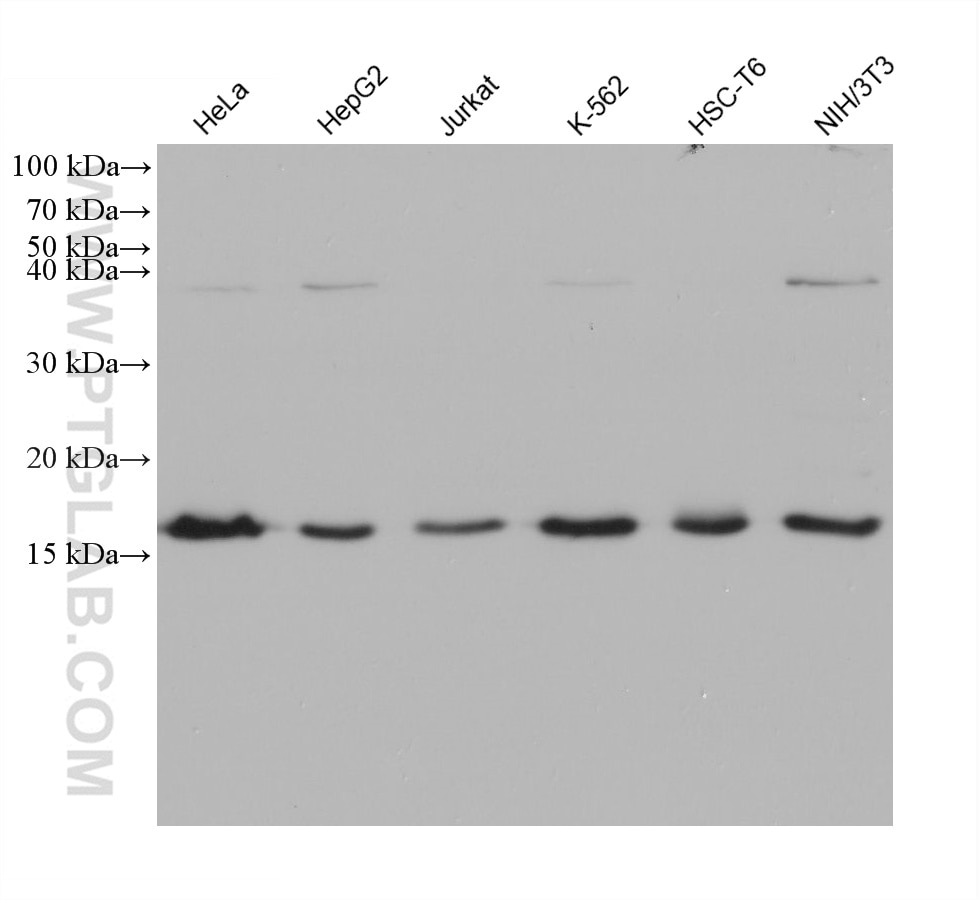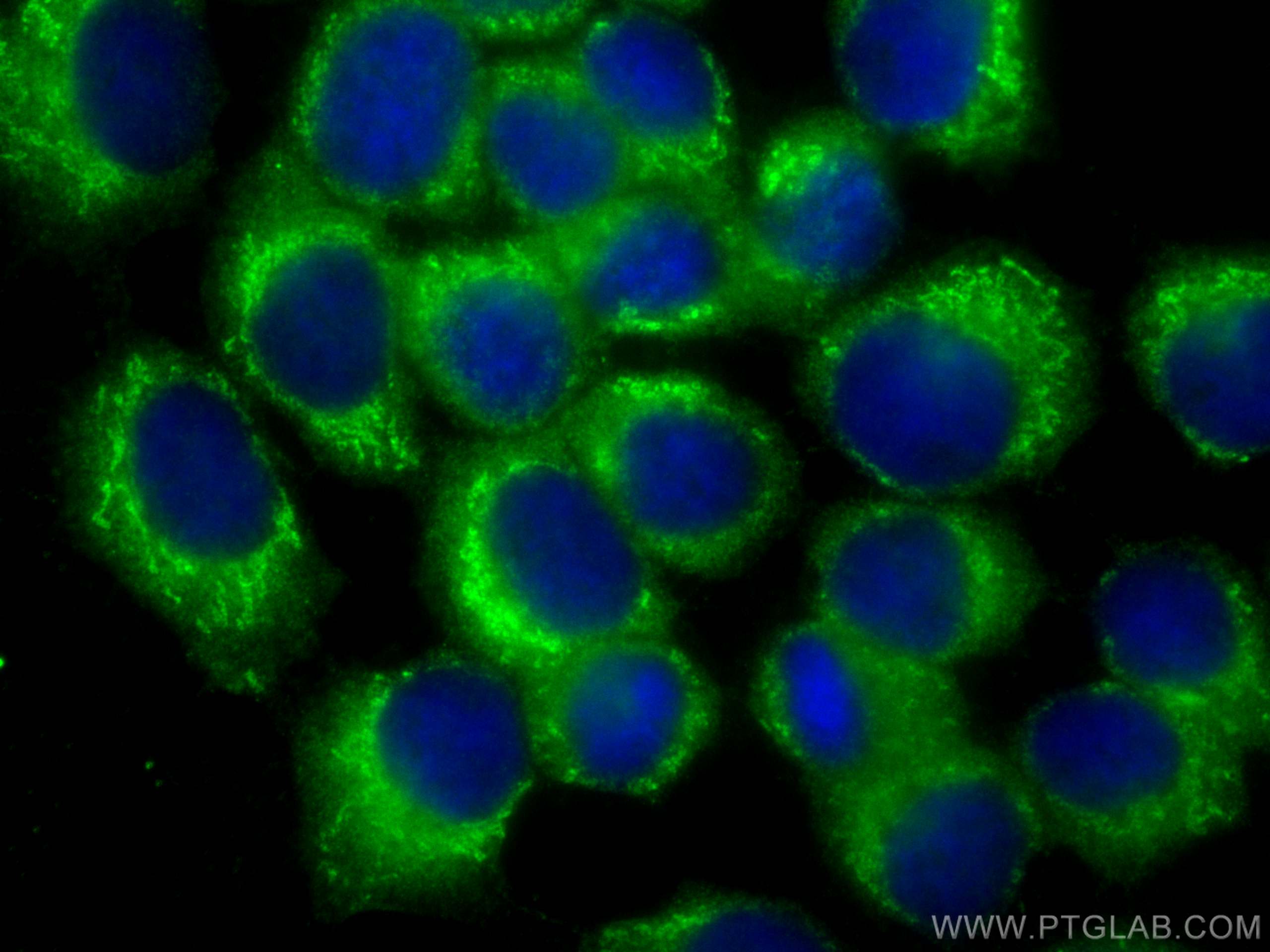- Featured Product
- KD/KO Validated
SNX3 Monoklonaler Antikörper
SNX3 Monoklonal Antikörper für WB, IF/ICC, ELISA
Wirt / Isotyp
Maus / IgG1
Getestete Reaktivität
human, Maus, Ratte
Anwendung
WB, IF/ICC, ELISA
Konjugation
Unkonjugiert
CloneNo.
2B5B7
Kat-Nr. : 68292-1-Ig
Synonyme
Geprüfte Anwendungen
| Erfolgreiche Detektion in WB | HeLa-Zellen, HepG2-Zellen, Jurkat-Zellen, K-562-Zellen, NIH/3T3-Zellen |
| Erfolgreiche Detektion in IF/ICC | A431-Zellen |
Empfohlene Verdünnung
| Anwendung | Verdünnung |
|---|---|
| Western Blot (WB) | WB : 1:5000-1:50000 |
| Immunfluoreszenz (IF)/ICC | IF/ICC : 1:400-1:1600 |
| It is recommended that this reagent should be titrated in each testing system to obtain optimal results. | |
| Sample-dependent, check data in validation data gallery | |
Produktinformation
68292-1-Ig bindet in WB, IF/ICC, ELISA SNX3 und zeigt Reaktivität mit human, Maus, Ratten
| Getestete Reaktivität | human, Maus, Ratte |
| Wirt / Isotyp | Maus / IgG1 |
| Klonalität | Monoklonal |
| Typ | Antikörper |
| Immunogen | SNX3 fusion protein Ag1160 |
| Vollständiger Name | sorting nexin 3 |
| Berechnetes Molekulargewicht | 19 kDa |
| Beobachtetes Molekulargewicht | 16-20 kDa |
| GenBank-Zugangsnummer | BC008444 |
| Gene symbol | SNX3 |
| Gene ID (NCBI) | 8724 |
| Konjugation | Unkonjugiert |
| Form | Liquid |
| Reinigungsmethode | Protein-G-Reinigung |
| Lagerungspuffer | PBS with 0.02% sodium azide and 50% glycerol |
| Lagerungsbedingungen | Bei -20°C lagern. Nach dem Versand ein Jahr lang stabil Aliquotieren ist bei -20oC Lagerung nicht notwendig. 20ul Größen enthalten 0,1% BSA. |
Hintergrundinformationen
SNX3 is a member of the sorting nexin family of proteins regulating membrane traffic. SNX3 regulates endosomal function through its PX (phox homology)-domain-mediated interaction with PtdIns(3)P (PMID: 11433298). It is a potential regulator of neurite formation and may play an important role in the development and function of the central nervous system (PMID: 19576982; 20817026).
Protokolle
| PRODUKTSPEZIFISCHE PROTOKOLLE | |
|---|---|
| WB protocol for SNX3 antibody 68292-1-Ig | Protokoll herunterladen |
| IF protocol for SNX3 antibody 68292-1-Ig | Protokoll herunterladen |
| STANDARD-PROTOKOLLE | |
|---|---|
| Klicken Sie hier, um unsere Standardprotokolle anzuzeigen |
Rezensionen
The reviews below have been submitted by verified Proteintech customers who received an incentive for providing their feedback.
FH Ioana (Verified Customer) (08-28-2025) | This antibody gave a good strong band in Western Blotting, allowing me to calculate the amount of overexpression and siRNA knock-down efficiency in my cell lines.
|



